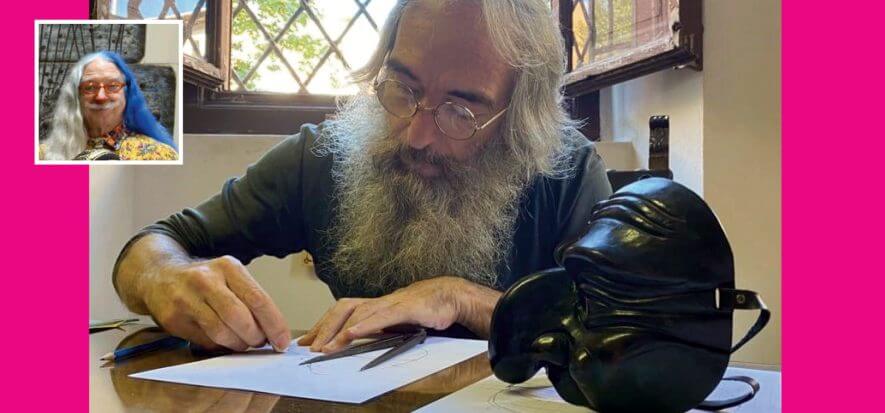“Twenty for the group and one for me”. These are the red noses, made of leather and not plastic, commissioned at the height of the pandemic to Giovanni Balzaretti, a Piedmontese mask maker (but with a workshop in Livorno), by Hunter Doherty Adams. In other words: Patch Adams, the American doctor who brought clowntherapy to hospitals. A story that is a little modern fairy tale. And for that, it is worth telling.
Giovanni Balzaretti
Balzaretti started making his red leather noses during the lockdown months. And he picked up a small commission from a clown friend. The step to seeing them enter the lane is short. Softer, more comfortable and even different coloured noses for the volunteers who are busy every day making children in hospitals smile. For example, he makes a blue one with stars for a Merlin Wizard. So far, however, we are still in Italy. How do Giovanni Balzaretti’s leather noses get to America?
Leather noses for Patch Adams
Two of Balzaretti’s client-friends (Ginevra Sanguigno and Italo Bertolasi) are part of Patch Adams’ group of 20 international volunteer coordinators. Who saw the noses and wanted them. The order came to Balzaretti with a WhatsApp message. “For a mask maker working for him and his group is like winning the Champions League,” Balzaretti told Corriere Fiorentino. “I couldn’t have aspired to anything more. Patch Adams will go down in history for having invented a therapy”.
The masquerade job
Meanwhile, Balzaretti’s work as a mask maker continues, with his 30-year-old son in the workshop. A long-time theatre actor, until four years ago he played Hector in the Iliad of the Teatro del Carretto in Lucca. The son of artisans, Balzaretti also shared his time with the set designers. Hence, the spark for masks. “During the tours, both in Italy and abroad, I remember that there was always this expectation for new masks. So I started thinking: why don’t I make them?”
The link with the Commedia dell’Arte
But how are these leather masterpieces that are a unique linked to the Commedia dell’Arte tradition made? “The process is similar to that of leather shoes when they are made by hand. You work the leather wet, nailing it behind the wooden mould, so once dry, it is indestructible. Leather is eternal, if it does not get damaged it outlasts the actor. Compared to shoes, however, masks are more difficult. There is an anatomy to take into account.
The actor has to see and breathe well, plus they have to look grotesque. For example, exaggerating the nose until it looks like a beak, or the eyebrows. I usually draw it together with the client, then I start sculpting the wooden cast and nail the leather to it. At this point I get the wet leather to follow the shape”. But the uniqueness of these masks is also due to a combination of other factors. “Even the colours are created by me starting from the raw materials,” Balzaretti concludes. “Just like the utensils, I make those too, following the tradition of the 16th century. This way, only unique pieces come out of the workshop”.
Read also:










